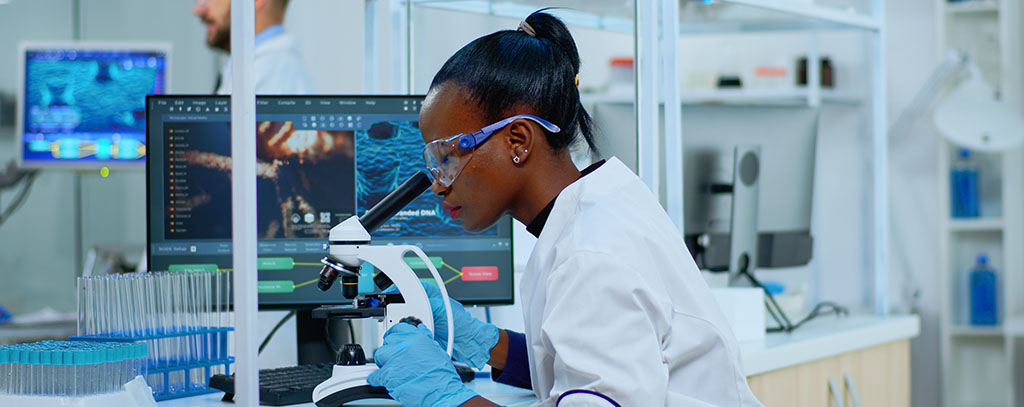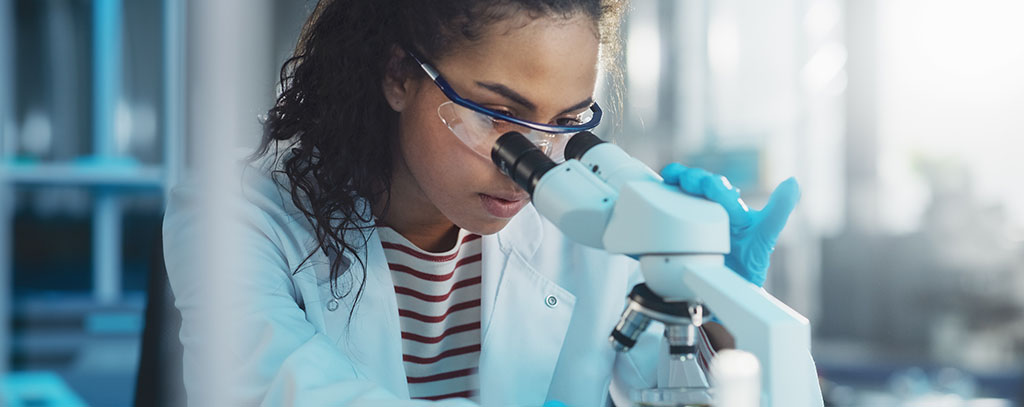


What is a 6 Panel Drug Test? Essential Guide
May 26, 2023


What is a 14 Panel Drug Test? In-Depth Guide
May 26, 2023When it comes to urine drug testing, one of the most comprehensive options available is the 14 panel drug test. This powerful diagnostic tool can detect a wide range of dangerous drugs in an individual's system, providing valuable information for employers and institutions alike. In this blog post, we will delve into what's on a 14 panel drug test and explore its various components.
As you read through this article, you'll gain insights into how a 14 panel drug test works and which substances it screens for. We will also discuss the benefits of using such an extensive testing method as well as some potential drawbacks to consider.
Furthermore, we'll examine who should utilize these tests and where they can be purchased. By understanding what's on a 14 panel drug test and its applications, you can make informed decisions about implementing this type of screening in your organization or institution.
Table of contents
- What is Tested on a 14 Panel Drug Test?
- Understanding the 14 Panel Drug Test
- Detection of Substances Not Typically Seen in Standard Testing
- Importance for Employers and Healthcare Professionals
- Drugs Included in the 14 Panel Test
- Hair Drug Testing vs Urine Drug Testing
- Professional Services Supporting Advanced Screenings
- The 14 Panel Drug Test Cup
- At-home Drug Testing Options
- Frequently Asked Questions What's on a 14 Panel Drug Test
- Conclusion
What is Tested on a 14 Panel Drug Test?
If you're looking for an accurate and comprehensive drug test, the Halux Diagnostic's 14 panel drug test cup may be just what you need. This type of drug test can detect up to fourteen different drugs in a single urine sample.
What Drugs are Detected in a 14 Panel Drug Test?
The following drugs can be detected by the Halux Diagnostic's 14 panel drug test:
- Amphetamines (AMP)
- Methamphetamines (MET)
- Cocaine (COC)
- Opiates (OPI/MOR)
- Benzodiazepines (BZO)
- Marijuana (THC)
- Methadone (MTD)
- Oxycodone (OXY)
- Barbiturates (BAR)
- Phencyclidine (PCP)
- Tricyclic Antidepressants (TCA)
- EDDP
- BUP
- Ectsasy
Understanding the 14 Panel Drug Test
The 14 panel drug test is an advanced screening method designed to detect a wide range of illicit and prescription drugs in a person's system. This comprehensive testing option goes beyond standard tests, allowing employers and healthcare professionals to identify potential substance abuse issues more effectively. By utilizing urine drug testing, companies can ensure they are maintaining a safe work environment while also adhering to legal requirements.
Detection of Substances Not Typically Seen in Standard Testing
Standard drug tests typically screen for common substances such as marijuana, cocaine, amphetamines, and opioids. However, the 14 panel test covers additional dangerous drugs that may not be detected by basic screenings. These include synthetic opioids like fentanyl or tramadol which have become increasingly popular due to their potency and low production costs.
Importance for Employers and Healthcare Professionals
- Safety: Detecting substance abuse early on helps maintain safety within the workplace by identifying employees who may pose risks due to impaired judgment or decreased productivity.
- Treatment: Identifying individuals with substance use disorders allows healthcare professionals to provide appropriate treatment options before problems escalate further.
- Compliance: Companies must adhere to various laws regarding employee drug use; implementing advanced screenings ensures compliance with these regulations while protecting both employees' rights and company interests.
Incorporating the 14 panel drug test cup into your organization's screening process can significantly improve detection rates of potentially harmful substances among staff members. This can safeguard the organization's image and further cultivate a more salubrious work setting for everyone employed.
It is important to understand the 14 panel drug test in order to ensure accuracy and reliability when it comes to detecting various substances. With that being said, let's explore what drugs are included in this type of testing.
Drugs Included in the 14 Panel Test
Hair Drug Testing vs Urine Drug Testing
When it comes to detecting substance use, both hair drug testing and urine drug testing are popular methods used by employers and healthcare professionals. Though both approaches are employed to spot substance use, there are distinctions between them that may affect their efficacy in uncovering potential misuse.
Advantages of Hair Drug Testing Over Urine Methods
- Detection Timeframe: Hair drug tests provide a longer detection window than urine tests. While urine samples typically only detect recent usage within days or weeks at most, hair tests can reveal traces of drugs taken several months prior.
- Fraud Prevention: It is more difficult for individuals to tamper with hair samples compared to urine specimens. Attempts at diluting the sample or substituting another person's specimen are less likely to succeed when using hair as the testing medium.
- No Invasive Collection Process: Collecting a hair sample is non-invasive and does not require any privacy concerns like those associated with collecting a urine sample.
Factors Affecting Detection Times
The detection window for either type of test may be influenced by various elements, such as the individual's metabolic rate, frequency of intake, dosage amount taken in, and even BMI. For example,
- A person who uses drugs infrequently may have shorter detection times compared to someone who abuses substances regularly;
- A higher dose intake could lead to longer periods before the substance becomes undetectable;
- Individuals with a higher BMI may retain drugs in their system for longer periods due to the increased presence of fatty tissues.
In conclusion, both hair and urine drug testing methods have their advantages and limitations. Employers and healthcare professionals should carefully consider these factors when choosing the most appropriate method for detecting substance use among employees or patients. By understanding the differences between these two types of tests, decision-makers can make more informed choices that will help them maintain a safe work environment while also addressing potential substance abuse issues effectively.
Hair drug testing offers a more accurate, longer detection window compared to urine methods and is the preferred method for many companies. Professional services supporting advanced screenings can help ensure workplace safety and compliance with policies while providing greater accuracy in results.
Professional Services Supporting Advanced Screenings
With the increasing prevalence of substance abuse and the need for more comprehensive drug testing, many companies are turning to professional services that offer advanced screenings like the 14 panel drug test. These services help organizations maintain a safe work environment by identifying employees who may have underlying substance abuse problems that could negatively impact their job performance or pose safety risks.
Benefits of Using Professional Services for Advanced Screenings
- Expertise: Professional drug testing centers possess extensive knowledge about various substances and their detection methods, ensuring accurate results in every test conducted.
- Compliance: By using professional services, employers can ensure they are adhering to federal and state regulations regarding workplace drug testing policies. This helps protect businesses from potential legal issues related to non-compliance.
- Counseling and Support: Many professional service providers also offer counseling and support resources for employees struggling with addiction or other mental health concerns. This holistic approach promotes overall employee well-being while addressing any potential dangers posed by substance use disorders (SUDs).
Maintaining Workplace Safety and Compliance with Policies
In addition to providing advanced screening options like the 14 panel urine drug test, these professional services often assist companies in developing comprehensive workplace policies surrounding SUDs. They can provide guidance on best practices for implementing random or scheduled tests as well as offering training programs aimed at educating managers about signs of impairment among staff members. Some even go so far as conducting onsite inspections to evaluate current protocols in place at your organization's facilities.
To learn more about how professional services such as Halux Diagnostic can support your company's efforts towards maintaining a safe work environment through advanced screenings like the 14-panel drug test, visit their website.
Professional services supporting advanced screenings can help ensure workplace safety and compliance with policies, while also providing a reliable source of drug testing supplies. The 14 panel drug test cup is an easy-to-use solution that provides quick results and high accuracy for detecting various drugs.
The 14 Panel Drug Test Cup
This one-step qualitative urine analysis detects up to fourteen different types of illegal substances within minutes and boasts an accuracy rate of up to 99%. In this section, we will discuss the ease-of-use and quick results provided by the 14 panel drug test cup, as well as its high accuracy rate for detecting various drugs.
Ease-of-Use and Quick Results
One major advantage of using a urine drug testing method like the 14 panel drug test cup is its simplicity. The process involves collecting a urine sample from the individual being tested directly into the specially designed cup. Once the cup is shut, a few minutes are all that's needed for the outcomes to be visible on its side. This makes it ideal for situations where immediate answers are necessary, such as pre-employment screenings or random workplace tests.
- No additional equipment required: The all-in-one design eliminates any need for extra tools or materials during testing.
- Rapid response: Results can be read in just five minutes after sealing the sample inside the cup.
- User-friendly: Clear instructions make administering and interpreting these tests simple even for those without prior experience in drug screening procedures.
High Accuracy Rate for Detecting Various Drugs
In addition to its user-friendly design, another key benefit of utilizing a 14 panel drug test cup is its ability to accurately identify a wide range of substances. With an accuracy rate of up to 99%, this test can help employers and healthcare professionals detect potential substance abuse issues more effectively than traditional methods.
Some of the drugs that can be detected by the 14 panel drug test cup include:
- Opiates: Codeine, Morphine, Heroin
- Synthetic Opioids: Fentanyl, Tramadol
- Amphetamines: Methamphetamine, MDMA (Ecstasy)
- Cannabinoids: THC (Marijuana)
- Benzodiazepines: Valium, Xanax
- Barbiturates: Phenobarbital, Secobarbital, PCP (Phencyclidine)
The 14 Panel Drug Test Cup is a reliable and accurate drug testing option that offers quick results, making it an ideal choice for companies in need of efficient drug screening solutions. Home drug tests provide an extra degree of convenience and privacy for those who'd rather avoid the difficulty of going to a lab or clinic; however, it's important to consider accuracy when selecting these kits.
At-home Drug Testing Options
In addition to professional testing services, at-home drug tests like the Rite Aid Drug Test provide individuals with a convenient way to screen themselves or loved ones in the privacy of their own homes. This FDA-cleared hospital-quality test offers accurate results within just 5-10 minutes by screening for both illicit substances and prescription medications through urine samples.
Convenience and Privacy Offered by At-home Drug Tests
- Ease of use: Most at-home drug tests are simple to administer, requiring only a small sample of urine for analysis.
- Affordability: Compared to laboratory-based testing, home kits tend to be more cost-effective while still providing reliable results.
- Anonymity: Utilizing an at-home drug test allows users to maintain their privacy without needing disclosure of personal information or medical history.
Accuracy and Reliability of FDA-cleared Home Testing Kits
FDA-cleared home testing kits undergo rigorous evaluation processes before receiving clearance, ensuring they meet specific criteria such as accuracy rates comparable with those obtained from professional laboratories. For example, many over-the-counter (OTC) options boast an accuracy rate up to 99%, making them a viable choice for detecting various drugs including dangerous drugs that could pose health risks if left undetected. It is important however that users carefully follow instructions provided with each kit in order not compromise result reliability due improper handling or storage conditions.
To further enhance confidence in the outcomes produced by these tests, it may be beneficial seek out additional resources such as SAMHSA's guidelines on drug testing procedures and the interpretation of results. By staying informed about best practices in urine drug testing, individuals can make more educated decisions regarding their own health or that of a loved one.
Frequently Asked Questions What's on a 14 Panel Drug Test
What shows up on a full panel drug test?
A full panel drug test typically screens for multiple substances, including amphetamines, barbiturates, benzodiazepines, cocaine metabolites, methadone, opiates/opioids (e.g., codeine and morphine), phencyclidine (PCP), propoxyphene, and marijuana. A 14-panel drug test additionally detects drugs like tramadol, fentanyl, sufentanil as well as other prescription medications.
What is the LabCorp test code for 14 panel drug screen?
LabCorp does not have a specific test code for a 14-panel drug screen. They offer various panels with different combinations of tests depending on your requirements. You can browse their test menu to find the appropriate testing options or contact them directly to customize a screening solution.
What is the most common false positive drug test?
False positives are rare but can occur due to cross-reactivity between certain medications and illicit drugs. The most common false-positive results involve amphetamines or opioids because some over-the-counter medications and prescription drugs may contain similar chemical structures that trigger positive readings in initial screenings.
What is the most common drug test for employment?
The most common pre-employment drug testing method is urine analysis using either a five-panel or ten-panel standard screening process. These tests detect commonly abused substances such as marijuana (THC), cocaine metabolites (benzoylecgonine), opiates/opioids (codeine/morphine/heroin), amphetamines/methamphetamine/MDMA, and phencyclidine (PCP).
What is the difference between a drug test and a drug screen?
A drug screen is an initial test that uses immunoassay technology to detect the presence of drugs or their metabolites in a sample. A positive result from a screening requires confirmation through more accurate methods like gas chromatography-mass spectrometry (GC-MS) or liquid chromatography-tandem mass spectrometry (LC-MS/MS), which are considered definitive drug tests.
Conclusion
After reading this article, you should now have a clear understanding of what's on a 14 panel drug test. This type of drug assessment is devised to recognize the existence of several substances in someone's system and is often employed by employers and educational institutions for maintaining a secure atmosphere.
If you're interested in purchasing high-quality 14 panel drug tests for your organization or business, consider checking out Halux Diagnostic. With their reliable and accurate testing supplies, you can trust that your results will be timely and trustworthy.
Call-to-Action: To learn more about Halux Diagnostic's selection of drug testing supplies, visit https://haluxdiagnostic.com/.





